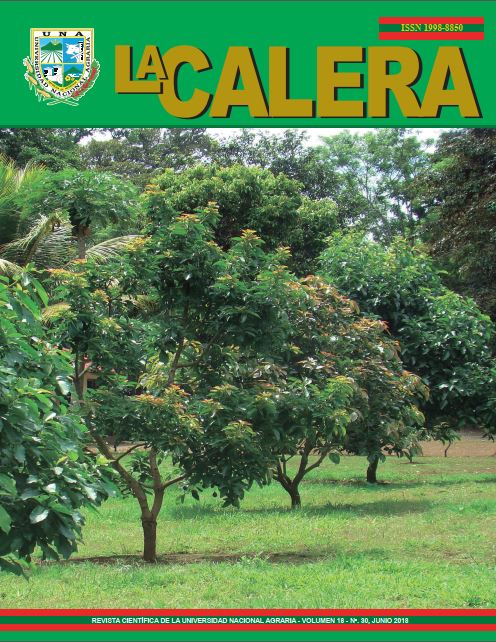Native vegetation as erosional control and ecological restoration, San José, Costa Rica
DOI:
https://doi.org/10.5377/calera.v18i30.7738Keywords:
Shrub, live barrier, urban forestry, herbs, plots, sediments, survival, Torres river watershedAbstract
The establishment of a protective layer composed by native species to develop a uniform successor community is essential for ecological restoration and is necessary to control eroding processes. A field assessment was carried out in three sites along the Torres river watershed through the establishment of eight experimental plots per site, one of them without vegetation and the rest with diff erent herbaceous and shrub species. Edaphic and climatic variables were considered on each site, while in each plot the species survival and the sediments production were evaluated monthly. The survival average in the three sites was over 50%, showing the species overcame post-sowing stress and managed to adapt successfully. In the upper and lower part, the plots sown with Hamelia patens and Tradescantia zanonia registered a lower erosion rate. For the middle part, Dahlia imperialis and T. zanonia, were the most efficient compared to the other four species. In general, in the high and low areas, the shrubs are dominant, and the herbaceous in the middle. The use of native species as a strategy of ecological restoration and urban forestry allows the improving of mechanical, hydraulic and environmental conditions of the study site, and acts as a living barrier against erosion.
Downloads
1272
HTML (Español (España)) 1075

